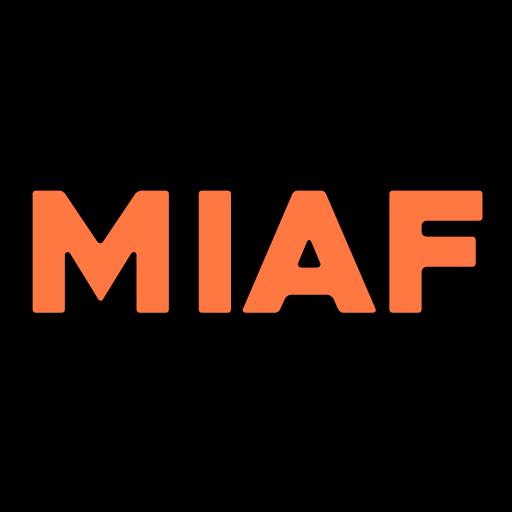
The End is Nigh. And what better way to embrace Armageddon, then watching some phenomenal animations to bring some cheer and feel some small consolation in the face of the collective despair we are experiencing.
This cathartic selection of artists’ animations includes films that delve into our darkest fears and our greatest hopes. Whilst we’re living through a time that feels eerily as though we are enduring characters in an unfolding disaster movie, and with the climate crisis ever present in our media and minds, these films proffer reflection, release, escapism, and hope.
The fires burn brightly in L’Heure de l’Ours (And Then The Bear) by Agnès Patron, where enraged children take to the streets. A generation rising up against their negligent adults, gone feral in an alliance with nature, ghostly faces dancing amongst the destruction. This film is furious and beautiful and unruly. The crimson hues of the painted frames stand out in the inky world of the film, bolstered by a forceful score that is a call to arms for the youth.

In Qianhui Yu’s Wastopia we observe a community of cute yet unsettling characters: discarded trash that lives and breathes, hybrids that are an assemblage of animal and man made objects. The imprint of humankind’s disposable culture is felt on this diminutive community. We watch them play in an amusement park made from our detritus in a deathly landscape. It’s like Lisa Frank meets Hieronymus Bosch with an added ecological message.
It would be remiss to do a programme imagining the world ending without including a kaiju. Though rather than rampage and destroy the city, Lucile Paras’s Godzalina is a towering, reptilian monster with a feminist agenda. And Godzalina’s mission – to diminish the misogynistic men running wild on the streets of Paris. It’s a light-hearted, wishful film, made with a fun, collage technique well suited to the tone.
Suraya Raja explores an internal apocalypse with Don’t Think of a Pink Elephant. The film centres on the traumatic state of hypervigilance experienced by a teenage girl, fearful of everything in her own home. Layla is plagued by intrusive thoughts of bodily injuries from household objects, which affects her daily life and ability to do simple tasks. The horror she imagines is brought to life on screen in visceral detail in this compassionate stop motion short.

There is an evident yet mysterious illness affecting the children at the centre of Sarina Nihei’s Polka-dot Boy, released in 2020, a year when we were all consumed by an anxiety-inducing plague. In this end of days scenario, a mysterious cult is rounding up the marked kids, whilst terrorist attacks are taking place in the background, and a vigilante walks around with a leather holdall filled with knives. Much is left for us to decipher in this violent, bloody, doomy short.
Based on the German fairytale, ‘The Fisherman and His Wife’, collected by the Brothers Grimm in 1812, Elizabeth Hobbs’s The Flounder, is a cautionary tale of where greed and excess can lead you. A contemporary take on a 200 year old tale, in this version the wild consumerism of the couple is vividly presented with the painterly seas becoming angrier and angrier as they are filled with trash. Ultimately, it does not end well for the people.

Are You Still Watching? by Alex Cardy, Kitty Chrystal and Tali Polichtuk, who experienced the world’s longest lockdown during the pandemic in Melbourne, have poured their subsequent frustration into this short. Borne from the boredom of being stuck indoors and endlessly watching your favourite series on Netflix, imagining what you might get up to with the sassy characters if they sprung from your screen. This punk short brings to life a series of erotic, queer fantasies, cheekily speculating on whether these hallucinations might be a symptom of the virus.

Another film where fantasy and reality seemingly blur is Devil in the Room by Carla MacKinnon, an experimental documentary about the terrifying condition of sleep paralysis. The subjects speak of the disquieting events they have endured, creatures from folkloric tales are conjured as spectral stop motion puppets, a voice spells out the science, another asserts that “sleep is as close to death as we get ”. It’s a fascinating, creative response to this fear inducing situation that many people will experience at least once in their life.

The portentous Creepy Pasta Salad by Lauren Orme follows three troubled people living in the same, unremarkable Welsh town. Each of them is dealing with their own everyday tribulations – endlessly waiting on hold for a call centre operator, googling abnormal physical symptoms, feeling invisible to others, and the impending doomsday party to plan. It’s a gentle, witty, existential short, and one that might make you want to check on your neighbour.

And finally, we witness the burdensome state of existence, central to Niki Lindroth von Bahr’s enigmatic and operatic Something to Remember. The tone is set with a child staring into an empty cage at the zoo, grasping onto an inflatable unicorn balloon, whilst singing about the devil coming. The film is filled with exquisite, melancholic songs of despair. In each seemingly mundane scenario, presented in miniature, there is a hint that something dark is afoot, the end is imminent. It is time to head for the EXIT sign.
Figures in Focus was devised in 2017 by Abigail Addison in recognition of the under-representation of female and non-binary animators and their stories within the independent animation sector. The programme spotlights some of the incredible work crafted by contemporary animators, both in the UK and internationally.
With thanks to Carla MacKinnon, Lauren Orme, Suraya Raja, Qianhui Yu, Nag Vladermersky, Claude TC, Waltraud Grausgruber, Elizabeth Hobbs, Kate Anderson, Samantha Moore, Ellie Land, and all the featured filmmakers, their producers, and distributors.
Abigail Addison
Figures in Focus: Apocalyptic screens online and at the Barbican Sat 25 Nov
















Leave a Reply